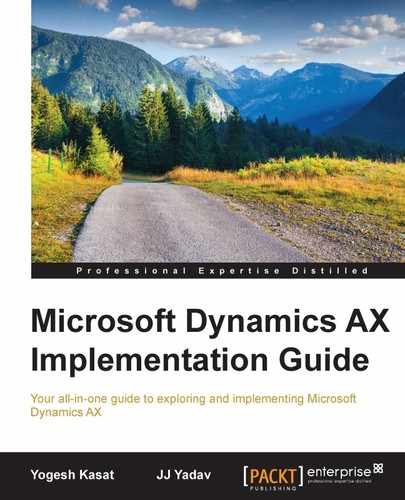Having a detailed plan put together, which can be used for multiple simulations prior to the go-live, is important. It gives you an opportunity to get the go-live plan validated and address any bugs/issues due to missed steps in the release plan. It also allows you to make changes to the plan, allows more time to review with multiple groups and identify the missing elements, and helps educate the team about dependencies and the big picture. The following are some guidelines for putting together your go-live plan:
- A smaller number of manual steps and more automation is ideal to ensure that you don't have too many steps to perform and track. As mentioned in Chapter 5, Data Migration – Scoping through Delivery, the validation of extraction, migration, and IT data should be automated as much as possible.
- Include a configuration checklist and any new configurations which need to be completed in the production environment prior to the go-live. Adopt automation or document in detail what needs to be done to complete the required configuration.
- Minimize dependencies; if activities can be completed in the production environment, mention that as a pre-release item. For example, if an integration solution requires creation of a new database, and if it can be done prior to the release, mention it as a pre-release item.
- You may be implementing ISV solutions or integrations with third-party systems, or integrating with an application managed by a different team in the same organization. Coordinate with different teams to understand the dependencies and activities needed to deploy or enable their solution. There should be one single deployment plan for all the components which need to be deployed as part of the release.
- Keep the overall deployment plan simple. Add additional attachments or links for the detailed steps which need to be performed.
- Create a repository to collect the artifacts and documentation required for completing individual tasks including release notes, validation plan document, configuration checklist, code artifacts, and so on.
- Put together a visual summary of the detailed plan (as referenced in Chapter 5, Data Migration – Scoping through Delivery). It helps in communicating with the stakeholders.
- Every step, including logistics like booking hotel rooms and ordering pizza, should be put on the plan with their owners.
- Ensure that you have not burnt your key resources with the release. Spread out tasks in a way that allows for downtime for the key resources. The real journey starts after putting the system into production, and you need everyone to stay energized for those first few weeks of transition.
- Try to keep the plan simple and easy to follow for the team. I have used the following table to put together a plan:
|
Column |
Description |
|---|---|
|
Sr. No |
This is the task number |
|
Dependency |
These are the task numbers that needs to be completed prior to starting. Used to define the dependencies between tasks. |
|
Type |
|
|
Description | |
|
Owner(s) |
This defines the owners to perform the tasks. |
|
Start date/time |
This is planned start time for the task. It is important to keep track of the timing on tasks that are on a critical path. Any delays in critical path items would impact the overall schedule of the release. |
|
Time needed |
This is the time needed to execute the task. |
|
Comments |
These are the comments and/or additional information. |
|
Detail steps |
These are the detailed steps to execute the overall task, if applicable. Attach or link to the detailed document if required. |
|
Status tracking: Status, actual start time, finish time |
Keep track of the actuals in release simulation cycles to adjust your plan, and work with the technical teams to reduce the time taken by critical path items. During production release, keep track of the actual timings for each of the task. |
